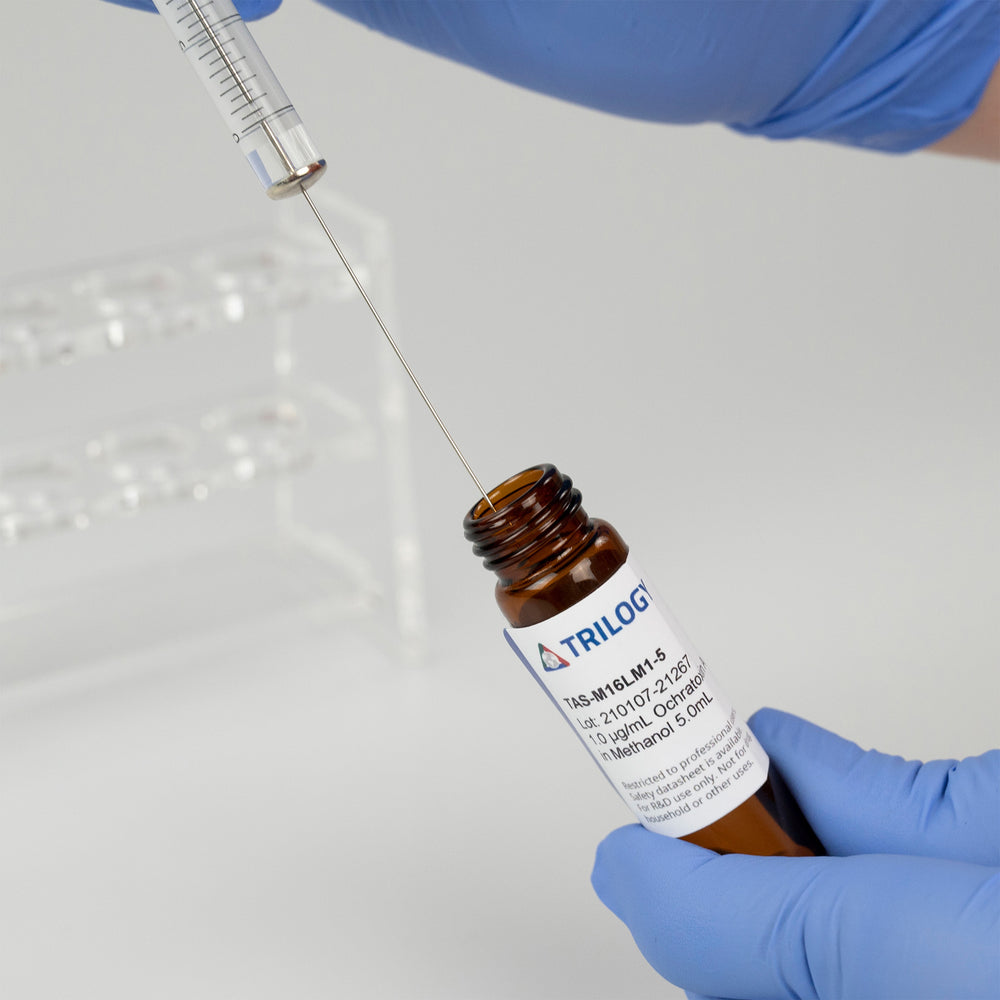Understanding Aflatoxin M1: Risks, Effects, and Prevention
Jenny Rodgers
June 9, 2023

June is National Dairy Month
In recent years, concerns surrounding food safety have increased, shedding light on various contaminants that pose risks to our health. One such compound is aflatoxin M1. While you may have heard about aflatoxins, it's important to understand the specific dangers associated with aflatoxin M1 and the measures we can take to mitigate its impact. In this blog post, we'll delve into the world of aflatoxin M1, exploring its effects, potential sources, and preventive strategies.
What is Aflatoxin M1?
Aflatoxin M1 is a naturally occurring mycotoxin that belongs to the aflatoxin group. It is produced by certain strains of molds, such as Aspergillus flavus and Aspergillus parasiticus, which can contaminate various food commodities. Aflatoxin M1 is a metabolite of aflatoxin B1, which is formed in crops such as peanuts, corn, cottonseed, and tree nuts.
Sources of Aflatoxin M1:
Aflatoxin M1 can find its way into the food supply chain through various routes. Common sources include milk and dairy products, particularly those derived from animals fed with aflatoxin-contaminated feed. Once inside the animal's body, aflatoxin B1 undergoes metabolic transformations primarily in the liver. It is metabolized by enzymes, resulting in the conversion of aflatoxin B1 into aflatoxin M1. Additionally, other products like cheese, yogurt, ice cream, and infant formula can also be potential carriers of aflatoxin M1 if the raw materials used in their production are contaminated.

Aflatoxin M1 is a metabolite of Aflatoxin B1, which is formed in crops such as peanuts, corn, cottonseed, and tree nuts.

Prevention and Control:
Preventing aflatoxin M1 contamination requires a multi-faceted approach involving farmers, food processors, and regulatory bodies. Here are some key preventive strategies:
- Good Agricultural Practices (GAPs): Implementing proper crop management techniques, such as regular monitoring, early harvesting, and appropriate storage conditions, can help minimize Aflatoxin contamination in crops.
- Quality Control Measures: Food processing industries should adhere to stringent quality control protocols, including rigorous testing and screening of raw materials, to ensure the safety of their products.
- Regulatory Standards: Governments and regulatory bodies play a crucial role in setting and enforcing maximum allowable limits for aflatoxin M1 in food products. Compliance with these standards ensures consumer safety and encourages industry accountability.
Regulatory Guidance:
Aflatoxin M1 regulations vary from country to country, but many nations have established guidelines and maximum allowable limits for aflatoxin M1 in food products to protect public health. Here are some of the countries and regions that have existing regulations or guidelines for aflatoxin M1:
- United States: View Regulation Details.
The U.S. Food and Drug Administration (FDA) sets regulatory action limits for aflatoxin M1 in milk at 0.5ppb. - European Union (EU): View Regulation Details.
The European Commission has established maximum levels for aflatoxin M1 in milk and milk products at 0.05 μg/kg and even lower maximum levels for infant formula and dietary foods at 0.025 μg/kg. - Codex Alimentarius: View Regulation Details.
The Codex Alimentarius Commission, an international food standards-setting body of the FAO and WHO, has developed guidelines and maximum levels for aflatoxin M1 in milk and milk products at 0.05 μg/kg. Codex standards often serve as a reference for national regulations worldwide.
Conclusion:
To minimize aflatoxin contamination and the formation of aflatoxin M1, it is crucial to implement good agricultural practices, proper storage conditions, and quality control measures throughout the food production chain. Regular monitoring, testing, and adherence to safety regulations are key in preventing aflatoxin contamination and minimizing the risk to human and animal health. Together, let's strive for a safer and healthier food supply.
About Trilogy
Trilogy is a food and feed safety laboratory specializing in mycotoxins, mycotoxin binder analysis, biogenic amines and animal drug residue testing. Trilogy Analytical Laboratory opened its doors in 1999 when its founders recognized a need in the mycotoxin industry for quick result turn-around utilizing reliable reference methods provided in an analytical setting. One of the main pillars of Trilogy’s strategy is to operate using a comprehensive quality program that we can rely on to ensure performance parameters are met every single time. From this philosophy the Trilogy line of quality products was born with the mycotoxin industry in mind.
Media Contact: Lynette Hischier, l.hischier@trilogylab.com






